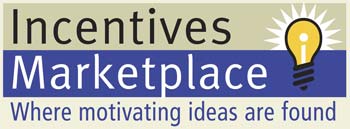Beyond Commissions: Maximizing Sales with Incentive Programs

Companies continuously seek innovative ways to maximize their sales and drive growth in the competitive business world. One of the most effective strategies to achieve this is through tailored incentive programs. While commissions have long been the backbone of sales teams’ motivation, numerous approaches beyond commissions can effectively inspire and drive performance. Let’s explore how a robust incentive structure can elevate your business by recognizing and rewarding the efforts of your employees and customers.
The Power of Incentive Programs
Incentive programs go beyond traditional compensation models to tap into individuals’ deeper psychological needs. The right incentive structure can not only drive performance but also foster loyalty, engagement, and a sense of accomplishment among team members and customers alike. At Incentives Marketplace, we understand the complexity of human behavior and the importance of designing programs that truly motivate and inspire.
Traditional Commissions and Their Limitations
While commissions are straightforward and often effective, their motivational power has limitations. Commissions typically reward a narrow range of behaviors, primarily closing sales. However, the modern sales landscape requires more than just closing deals—it demands relationship-building, product knowledge, customer service, and continuous engagement.
Beyond Commissions: A Holistic Approach
Transitioning from a commission-centric model to a more comprehensive incentive program involves recognizing a wider array of behaviors and achievements. This broader approach ensures that all aspects of performance are acknowledged and rewarded, fostering a more inclusive and sustainable motivation strategy. Here are some elements that can be included in a holistic incentive program:
- Recognition and Praise: Sometimes, a simple “thank you” can go a long way. Public recognition can be a powerful motivator and can be implemented through awards, shout outs in team meetings, or featuring high performers in company newsletters.
- Training and Development Opportunities: Offering employees the chance to grow and develop their skills can be extremely motivating. Providing access to courses, workshops, and certifications shows that the company is invested in their professional growth.
- Progress Tracking and Feedback: Implementing systems that allow for transparent performance tracking and provide regular feedback can help maintain high levels of engagement and motivation. This helps employees understand how their efforts contribute to the bigger picture.
- Employee and Customer Rewards: Developing reward systems that go beyond monetary compensation can create a more engaging experience. These rewards can range from gift cards, trips, and experiences to exclusive discounts or access to special events.
- Team-Based Incentives: Encouraging teamwork by rewarding collective achievements not only boosts morale but also fosters a collaborative culture. This could be in the form of team outings, bonus pools, or joint recognition events.
Designing an Effective Incentive Structure
Creating an effective incentive program involves careful planning and understanding what truly drives the behavior of your employees and customers. Here are some key steps to help you design a program that brings out the best in your team.
Step 1: Define Clear Objectives
The first step in designing an incentive program is to define clear objectives. What do you want to achieve? Whether it’s increasing sales, improving customer satisfaction, or reducing turnover, having clear goals will help craft a targeted approach.
Step 2: Understand Your Audience
Knowing what motivates your employees and customers is crucial. Conduct surveys, focus groups, or one-on-one interviews to gather insights into their preferences and desires. Different factors might motivate each group, and a one-size-fits-all approach is unlikely to be effective.
Step 3: Communicate Clearly
Clearly communicate the details of the incentive program to all participants. Ensure they understand how it works, what behaviors and achievements are being rewarded, and what they stand to gain. Regular communication helps keep the program at the forefront of their minds.
Step 4: Provide Training and Resources
For an incentive program to be successful, participants must have the tools and knowledge to excel. Offer training sessions, resource materials, and continuous support to help them reach their goals.
Step 5: Measure and Report Progress
Tracking the progress of the incentive program is essential for maintaining motivation and making necessary adjustments. Report on key metrics regularly and provide updates to participants to keep them engaged and informed.
Step 6: Celebrate Achievements
Celebrating milestones and achievements keeps morale high and reinforces positive behavior. This could be through individual recognition, team celebrations, or organizational announcements. Celebrations help maintain enthusiasm and motivate others to strive for success.
Real-World Examples of Successful Incentive Programs
Let’s explore some real-world examples of successful incentive programs that have transformed businesses. These case studies highlight innovative approaches and the resultant benefits.
Case Study 1: Salesforce’s “President’s Club”
Salesforce runs a highly coveted “President’s Club” incentive program to reward its top sales performers. The program doesn’t just focus on sales numbers but also considers customer satisfaction and teamwork. Winners are treated to an exotic vacation and publicly recognized by the company’s top executives. This not only motivates sales personnel to exceed their targets but also strengthens their loyalty to the company.
Case Study 2: Starbucks’ Employee Stock Options
Starbucks offers its employees, referred to as “partners,” stock options as part of their incentive structure. This unique approach ensures that every employee feels like a part-owner of the company, aligning their interests with the business’s long-term success. This sense of ownership boosts engagement, reduces turnover, and drives employees to contribute meaningfully to the company’s growth.
Case Study 3: Amazon’s “Customer Obsession” Program
Amazon’s “Customer Obsession” program rewards employees for innovative ideas to improve customer experience. Employees submit their ideas, and those that are implemented receive significant rewards ranging from cash bonuses to exclusive experiences. This program has successfully fostered a culture of continuous improvement and customer-centric innovation.
Building a Sustainable Competitive Advantage
In today’s rapidly changing business environment, companies need to build a competitive advantage that is not just impactful but also sustainable. A well-crafted incentive program can play a pivotal role in achieving this.
Foster a Culture of Recognition
When employees and customers feel valued and recognized, their loyalty and engagement levels soar. Regularly acknowledging their contributions and efforts creates a positive feedback loop that encourages continuous high performance.
Drive Desired Behaviors
An effective incentive structure ensures that the desired behaviors are continuously reinforced. Whether improving customer service, fostering teamwork, or driving sales, the incentives should align with the organization’s goals.
Enhance Employee and Customer Loyalty
A comprehensive incentive program attracts and retains top talent. High turnover can be costly, both financially and in terms of productivity. Similarly, loyal customers become brand advocates, driving referrals and long-term business growth.
Mapping Out Your Incentive Program
Drawing inspiration from the examples above, let’s consider a tailored incentive program that could suit your business. At Incentives Marketplace, we specialize in helping clients design and implement custom incentive programs that resonate with their unique cultures and objectives.
Employee-Centric Program: “Path to Success”
Objective: Boost sales performance and employee engagement.
Incentives:
- Tiered Rewards: Sales targets combined with secondary metrics such as customer feedback scores or peer reviews.
- Development Opportunities: High performers get access to exclusive leadership courses or industry conferences.
- Recognition Events: Quarterly recognition events, including awards and public acknowledgment.
- Team-Based Bonuses: Bonuses for achieving collective targets, encouraging collaboration and team spirit.
- Health and Wellness: Access to wellness programs, gym memberships, and mental health resources.
Customer-Centric Program: “Loyalty Rewards Plus”
Objective: Enhance customer satisfaction, retention, and advocacy.
Incentives:
- Tiered Discounts: Offering more discounts and exclusive deals as customers reach higher spending levels.
- Referral Bonuses: Reward customers who refer friends or family with bonus points or cash rewards.
- VIP Experiences: Exclusive access to events, new product launches, or behind-the-scenes tours.
- Perks and Freebies: Free shipping, early sales access, and free products or services.
- Feedback Loop: Incentivizing customers to provide regular feedback is used to improve products and services.
Partnering with Incentives Marketplace
Creating an incentive program that effectively drives behavior and achieves your business goals is no simple task. It requires a nuanced understanding of human motivation, strategic planning, and continuous adaptation. At Incentives Marketplace, we are committed to helping you design programs that not only meet your objectives but also enhance the overall experience of your employees and customers.
Contact us to learn how we can help you build an incentive structure that drives real results. Discover how our solutions can transform your business. Partner with us to create programs that recognize and reward the people who matter the most to your organization, cultivating a sustainable competitive advantage and driving your business to new heights.
